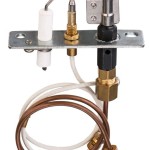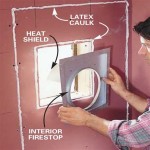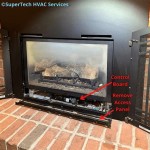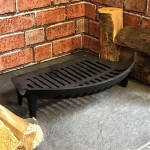Best Wood To Burn In Fireplace Insert
Fireplace inserts offer an efficient and aesthetically pleasing method for heating homes. However, the effectiveness and longevity of a fireplace insert are directly tied to the type of wood used as fuel. Selecting the correct wood is crucial for maximizing heat output, minimizing creosote buildup, and ensuring the overall safety and performance of the appliance. This article provides comprehensive information on the best wood choices for fireplace inserts, focusing on their characteristics and suitability for this application.
Understanding the properties of different wood types is paramount to making informed decisions regarding fuel selection. Hardwoods and softwoods differ significantly in density, moisture content, and resin content, all of which influence their burning characteristics. These factors impact the amount of heat generated, the duration of the burn, and the potential for producing harmful emissions. This discussion will cover the distinctions between these wood categories and their relevance to fireplace insert operation.
Understanding Hardwoods and Softwoods
The terms "hardwood" and "softwood" refer to the botanical classification of trees, not necessarily to the actual hardness of the wood. Hardwoods are typically deciduous trees, meaning they lose their leaves annually, while softwoods are generally coniferous trees, characterized by needles and cones. This distinction has profound implications for the density and composition of the wood.
Hardwoods, with their denser cellular structure, tend to burn hotter and longer than softwoods. They also produce less smoke and creosote. This is because the higher density allows for a greater concentration of combustible material within a given volume. Popular hardwood choices include oak, maple, ash, and birch. These woods are prized for their heat output and clean burning qualities.
Softwoods, on the other hand, burn quickly and produce more smoke and creosote. Their lower density and higher resin content contribute to these characteristics. While softwoods can be used for starting fires, they are generally not recommended as the primary fuel source for fireplace inserts due to their lower efficiency and potential for creosote accumulation. Examples of softwoods include pine, fir, and spruce.
Creosote is a dark, oily substance that forms when unburned wood particles and gases condense in the chimney flue. It is highly flammable and poses a significant fire hazard. Using properly seasoned hardwoods significantly reduces creosote buildup, contributing to a safer and more efficient heating system.
The Importance of Seasoning Wood
Seasoning wood, also known as drying, is a critical step in preparing wood for use in a fireplace insert. Freshly cut wood, often referred to as "green" wood, contains a high moisture content, typically ranging from 30% to 50%. Burning green wood results in significantly reduced heat output, increased smoke production, and a higher risk of creosote buildup. The energy required to evaporate the moisture in green wood detracts from the heat available for warming the home.
Seasoning wood involves allowing it to air dry until the moisture content is reduced to around 20% or less. This process typically takes six months to a year, depending on the type of wood, the climate, and how the wood is stacked. Proper stacking involves creating air gaps between the logs to allow for optimal air circulation. A single row stack, elevated off the ground where possible, is an ideal way to season wood.
Signs of well-seasoned wood include splitting and checking (cracks in the end grain), a dull gray color, and a lighter weight compared to green wood. Seasoned wood will also produce a distinct "hollow" sound when two pieces are struck together.
Burning only seasoned wood is essential for maximizing the efficiency and safety of a fireplace insert. It ensures optimal heat output, minimizes smoke and creosote, and prolongs the lifespan of the appliance.
Recommended Hardwood Choices for Fireplace Inserts
Several hardwood species are particularly well-suited for use in fireplace inserts, offering a combination of high heat output, clean burning qualities, and availability. The specific choice will depend on local availability and personal preference.
Oak: Oak is considered one of the best wood choices for fireplace inserts. It is a dense hardwood that burns slowly and produces a significant amount of heat. Oak is also relatively easy to split and season. However, it can take longer to season than some other hardwoods, typically requiring at least a year of air drying.
Maple: Maple is another excellent hardwood option. It burns hot and clean, produces relatively little smoke, and is relatively easy to split. Maple seasons faster than oak, typically requiring around six to nine months of air drying.
Ash: Ash is a fast-burning hardwood that provides good heat output. It splits easily and seasons relatively quickly. Ash is a good choice for those seeking a readily available and easily manageable fuel source.
Birch: Birch is a medium-density hardwood that burns well and produces a pleasant aroma. It is relatively easy to split and seasons quickly. However, birch can be prone to rot if not stored properly, so it is important to keep it dry and well-ventilated.
Cherry: Cherry wood is known for its distinct aroma and clean burning qualities. While not as dense as oak or maple, it still provides good heat output and is a popular choice for those seeking a more aesthetically pleasing wood. It is generally easier to split and season than oak.
When selecting hardwood for a fireplace insert, it is important to consider the specific burning characteristics of each species and choose the one that best suits individual needs and preferences. Factors such as heat output, burn time, ease of splitting, and seasoning time should all be taken into account.
In addition to the species mentioned above, other hardwoods such as hickory, beech, and walnut can also be used in fireplace inserts. However, these woods may be less readily available or have other characteristics that make them less desirable for some users.
Ultimately, the best wood for a fireplace insert is one that is properly seasoned, burns cleanly, and provides adequate heat output for the desired application. By understanding the properties of different wood types and following proper seasoning practices, homeowners can ensure a safe and efficient heating experience.
It is essential to note that painted, treated, or manufactured wood products should never be burned in a fireplace insert. These materials can release harmful chemicals into the air and damage the appliance. Only natural, untreated wood should be used as fuel.
Regular chimney inspections and cleaning are also crucial for maintaining the safety and efficiency of a fireplace insert. A qualified chimney sweep can remove creosote buildup and identify any potential hazards, ensuring that the system is operating safely and effectively. Frequency of cleaning depends on usage and wood type, but annual inspections are always recommended.
Using the appropriate type of wood, combined with proper seasoning and maintenance practices, will maximize the benefits of a fireplace insert, providing efficient and reliable heating for years to come.

The Best Wood Burning Fireplace Inserts Or Stoves Ecohome

Why A Wood Burning Fireplace Insert Bethesda Md Service

Why A Wood Burning Fireplace Insert Bethesda Md Service

Comparing Fireplace Inserts What S Best For You Forge Flame

Wood Burning Fireplace Inserts Insert Installation

Best Wood Burning Fireplace Inserts Of 2024 Forestry Reviews

The Best Wood Fireplaces Of 2024 Direct Learning Center

Quadra Fire Expedition Ii Wood Insert Best

A Step By Guide To Understanding Fireplace Inserts

Wood Burning Inserts Use Seasoned Ord Ct The Cozy Flame








